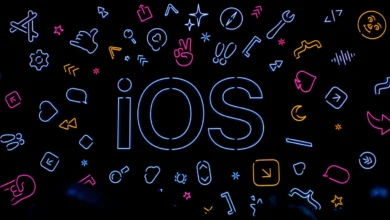The Social Media Generation Gap: Bridging the Divide Between Boomers, Millennials, and Gen Z in 2023

Social Media Generation Gap
Social media has become an integral part of our lives, but it has also created a divide between generations. Boomers, Millennials, and Gen Z all have different experiences with social media and use it for different purposes. This divide can make it difficult for businesses to reach their target audience and for individuals to connect with one another. In this article, we will explore the social media generation gap and provide strategies for bridging the divide between Boomers, Millennials, and Gen Z.
-
Understanding the Different Generations
To bridge the social media generation gap, it’s essential to understand the different generations and their social media habits. Boomers were born between 1946 and 1964 and typically use social media to connect with friends and family. They are more likely to use Facebook and LinkedIn and are less likely to use Instagram and Snapchat.
Millennials were born between 1981 and 1996 and are more active on social media than any other generation. They are likely to use multiple platforms, including Instagram, Snapchat, and Twitter. They use social media to connect with friends, share content, and stay up-to-date with news and current events.
Gen Z, born between 1997 and 2012, is the first generation to grow up entirely in the digital age. They are heavy users of social media platforms like TikTok, Instagram, and Snapchat. They use social media for entertainment, self-expression, and to connect with like-minded individuals.
-
The Impact of Social Media on Communication
Social media has transformed the way we communicate, but it has also had an impact on the quality of communication. Studies have shown that social media use can lead to feelings of loneliness, anxiety, and depression. It’s essential to understand how social media affects communication to bridge the social media generation gap.
Boomers tend to prefer face-to-face communication and may view social media as a poor substitute for in-person interactions. Millennials and Gen Z, on the other hand, are more comfortable with digital communication and may use social media as their primary form of communication.
-
Bridging the Social Media Generation Gap
To bridge the social media generation gap, it’s essential to understand the different generations’ preferences and habits. Here are some strategies for bridging the divide between Boomers, Millennials, and Gen Z:
- Use multiple social media platforms: To reach a broad audience, use multiple social media platforms. Boomers may prefer Facebook, while Millennials and Gen Z may prefer Instagram and TikTok.
- Use different types of content: Different generations prefer different types of content. Boomers may prefer text-based content, while Millennials and Gen Z may prefer visual content like videos and images.
- Use clear and concise language: To communicate effectively with different generations, use clear and concise language. Avoid using jargon or overly technical terms.
- Be inclusive: To connect with individuals from different generations, be inclusive in your content. Avoid making assumptions or stereotypes about different generations4. Additional Tips for Bridging the Social Media Generation Gap
In addition to the strategies mentioned above, here are some additional tips for bridging the social media generation gap:
- Provide context: When sharing content, provide context to help individuals from different generations understand the significance of the information. This can help bridge the gap and make your content more accessible.
- Embrace diversity: Embracing diversity in your content can help bridge the gap between generations. Including individuals from different backgrounds and experiences in your content can make it more relatable to a broader audience.
- Use humor: Using humor can help break down barriers and create a more relaxed atmosphere. However, it’s important to use humor that is appropriate for all generations and doesn’t rely on stereotypes or offensive language.
- Be authentic: Authenticity is crucial in social media marketing. Being authentic can help you connect with your audience on a deeper level and build trust with individuals from different generations.
- Keep up-to-date with social media trends: Social media is constantly evolving, and it’s essential to stay up-to-date with the latest trends and features. This can help you create content that is relevant and engaging for your audience.
-
The Importance of Bridging the Social Media Generation Gap

Bridging the social media generation gap is crucial for businesses and individuals who want to connect with a broad audience. By understanding the different generations’ preferences and habits and creating inclusive content, it’s possible to reach individuals from different backgrounds and experiences.
Bridging the social media generation gap can also lead to increased understanding and empathy between generations. By sharing content that is relevant and relatable to individuals from different generations, it’s possible to break down barriers and create a more connected society.
Read More:Navigating the 5 Benefits and Drawbacks of Social Media in Today Digital Age
Conclusion
Bridging the social media generation gap is essential for businesses and individuals who want to connect with a broad audience. By understanding the different generations’ preferences and habits, using multiple social media platforms, and creating inclusive content, it’s possible to bridge the divide between Boomers, Millennials, and Gen Z. Remember to use clear and concise language and to be mindful of how social media affects communication. With these strategies, you can reach a broad audience and connect with individuals from different generations.
bridging the social media generation gap requires understanding the different generations’ preferences and habits, creating inclusive content, and staying up-to-date with social media trends. By following these strategies, it’s possible to connect with individuals from different generations and create a more connected and empathetic society.











